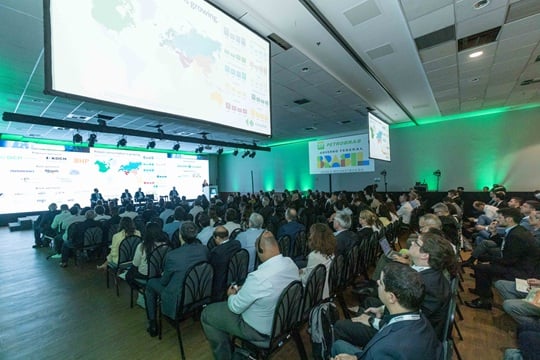Fertilizer Week began publishing short-term price forecasts in 2007. In the last 10 years the scope of our outlook expanded from urea and DAP to include sulphur and sulphuric acid. In 2016 we added potash, ammonia and NPKs to our coverage – now the market’s most comprehensive set of forecasts.
Our editors draw on their intimate knowledge of the traded physical spot markets and combine it with our analysts’ structural understanding of global and regional supply and demand to produce a detailed forecast on prices for the coming six months. We publish a fresh set of numbers early each month and make them available to clients on the CRU client website.
Commodity markets are untamed beasts and fertilizers are among the most volatile. In today’s unstable climate traders, end users and producers all seek to manage their risks as effectively as possible. Our Short-Term Forecasts help all stakeholders do so and form a central feature of a subscription to Fertilizer Week.
Urea
Editors maintain a close dialogue with most key market operators to produce their forecasts, discussing access to perceived forward volumes, changes in trade patterns and likely price development, says Lars Taarland, editor of the urea market report for Fertilizer Week.
“Our forecasts are supported by CRU’s substantial price and trade database, enabling early identification of changes to trends and switches in preferred fertilizer grades,” says Lars, who has more than 30 years’ commercial experience of fertilizer trading.
Medium to long-term assessments of production costs and capacity changes from CRU Analysis provides valuable assistance in deriving trade balances for forecasts. In-depth short-term analysis from CRU offices in China and India also aid country-specific input.
As has been the case in other nitrogen products, substantial volatility prevailed in urea over the recent months, with a clear downward trend evident since early April. This has particularly been the case in the US where barge values are back into numbers last seen in 2016, and Middle East netbacks have suffered accordingly. Supply-demand balances continue to point to further price-deterioration, but a floor may be in sight if netbacks slip even more.
Ammonia
Volatility in ammonia values makes forecasting numbers for the coming six months a real challenge, according to Jennifer Willis-Jones, senior editor of ammonia market report at Fertilizer Week.
Anticipating future ammonia demand for downstream fertilizer production is the key to making price predictions, along with valuable input on merchant ammonia capacity additions supplied by our analysts.
Weaker prices are on horizon given improvements in supply east and west of Suez, with FOB benchmarks in the Black Sea and Middle East likely the first to move. The US Gulf price will move accordingly, while also taking into account domestic US demand and anticipated export volumes over the coming month.
Potash
The current low-price environment of potash means on one level producers do not have the same clout in negotiations with buyers that they did at a time of higher prices, according to potash editor Logan Collins.
The settlement of a Chinese contract is the most anticipated potash event of the year, with the price serving as a benchmark for spot sales globally. For this reason, forecasts of the Chinese contract are the subject of great interest by market participants at every level of the supply chain.
The timing of a Chinese settlement is also an important factor in forecasting other global potash spot prices. Fertilizer Week strives to explain why a settlement is anticipated when it is.
DAP and NPKs
The world of phosphates is vast and sprawling, covering phosphate rock, phosphoric acid, DAP/MAP, SSP, TSP, NPS and NPKs. Our short-term forecast focuses on five DAP prices.
China, the world’s biggest phosphate producer, often dominates the market and a good deal of time is spent communicating with our Beijing office, to understand what exporters from China are thinking, according to FW phosphates editor Tom McIvor.
In response to customer demand, we were the first publisher to introduce an NPK forecast . NPK/NPS prices are less volatile than DAP, but tend to follow the same trend, if with a little lag and a premium to constituent N, P and K nutrients. As granular phosphate suppliers increase production and continue diversifying sales in the coming years, it will be fascinating to see if this trend persists.
Sulphur and Sulphuric Acid
Sulphur prices in the current market tend to be limited on both the upside and downside by the cost margins of supply sources. The market moved into a fundamental surplus in 2017 from a deficit in recent years, and is expected to remain in a surplus over the medium term, FW sulphur and sulphuric acid editor Brendan Daly says.
On the demand side, sulphur prices are primarily determined by phosphate fertilizer values and production rates, and so our Short-Term Forecast for DAP influences the sulphur outlook.
For sulphuric acid, the nature of the product means that producers are unable to stockpile volumes, and therefore the market must always be balanced at any price necessary, sometimes leading to negative FOB prices. As well as taking account forecasts for downstream phosphate and substitute (for some buyers) sulphur, the market also considers the view for base metals markets, which are a source of supply as well as demand.
















